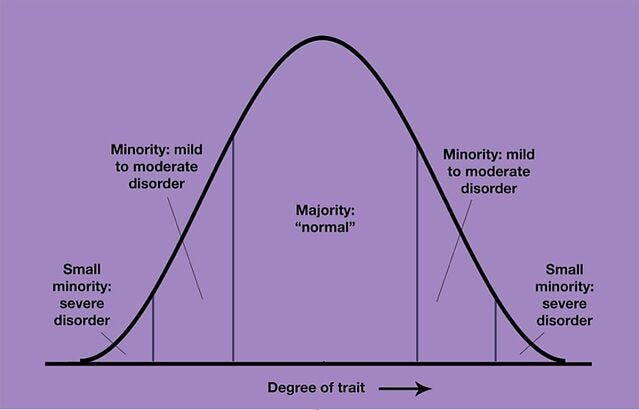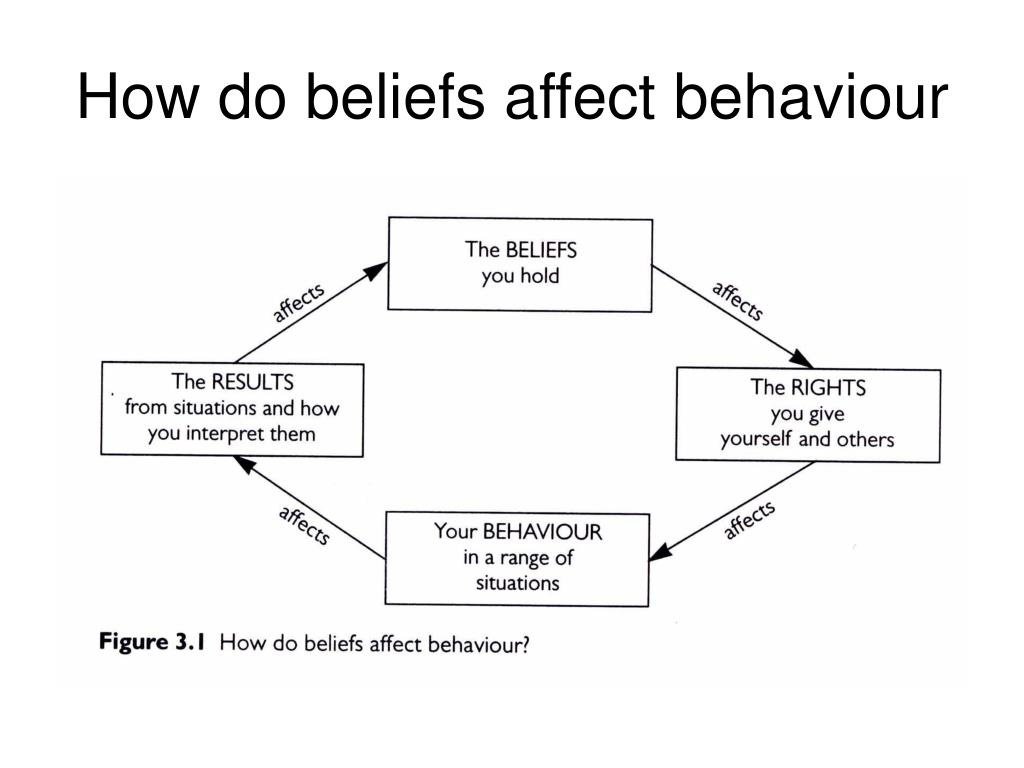I think that it is fair to say that a significant percentage of Americans feel like something has gone fundamentally wrong with our nation over the last 10 years. Behaviors and ideas which were once considered way outside the mainstream are now accepted as fact and encouraged by our institutions. Most people have no idea what the causes of this negative trend are, but they are sure that something has gone fundamentally wrong.
It is hard not to ask the questions:
Have we all gone crazy?
Is this the final outcome of progress?
A major theme of my book series and this Substack column is the very positive benefits of human material progress. I believe that it is humanity’s greatest accomplishment, and we need to keep it going and spread its benefits as far and wide as possible.
I do not, however, think that this is the entire story of material progress. There are some disturbing side-effects of material progress that society needs to come to terms with. To be clear, these negative side effects do not mean that we should try to shut down material progress. Instead, we need to focus on mitigating the negative side effects of that progress. Before we can mitigate, however, we need to understand the problem.
A big problem has been a substantial spike in self-destructive and anti-social behaviors, particularly among youths. Jonathan Haidt, Greg Lukianoff, and Jean Twenge have done excellent work cataloging a serious decline in mental health, particularly among teenage girls and young women who consume lots of social media. They give strong evidence that social media is the main cause. I agree with most of their conclusions, but I think social media is only one part of the cause.
I believe this problem is caused by an interaction among:
Material prosperity
Mental disorders that have always existed
Radical ideologies that intensify and weaponize mental disorders to push those with mental disorders into self-destructive and anti-social behaviors
Social media and other digital technologies that propagate those radical ideologies and negative behaviors via algorithms.
How progress works
How is it that material progress, which is obviously a good thing for humanity, can also be associated with these recent negative trends?
First, let’s understand how progress works. Human beings are biological organisms. As such, we are highly constrained by a whole host of forces in the material world:
Physics
Chemistry
Biology
Geography, and more…
In particular, humans have been constrained by our need to consume energy in the form of food to survive and reproduce. Because food production is highly constrained by geography, this has put massive constraints on human history.
Fortunately, a few societies had unique geographies that enabled them to partially escape these constraints. Gradually, humans have innovated technologies, skills, and social organizations that have enabled us to push back on those constraints.
This has dramatically increased our material prosperity, but it has had an unintended effect on human psychology.
Human psychology
As Daniel Kahneman has explained in his book “Thinking, Fast and Slow”, the human brain is divided into two systems:
A non-rational portion of the brain that operates automatically and without effort. This part of the brain largely establishes our goals.
A rational portion of our brain that requires large amounts of energy and effortful mental actives to make deliberate choices. This part of the brain is only used when it is essential to solve complex problems that the non-rational brain cannot solve.
Human beings, being biological organisms, have evolved psychologies that conserve energy. Our ancestors had to carefully balance energy consumption with energy expenditures. Those who got the right balance survived, reproduced, and passed on their genes to the next generation. Over the generations, this gradually remapped our psychology. So now we all have unconscious energy balance calculations built into our genes and psychology.
This means that most humans always prefer the non-rational portion of our brain whenever it leads to acceptable results. It is only when we are confronted with repeated examples of failure do we force ourselves to use the rational portion of our brain. For some people, making this switch is easier than others, and presumably, our genes account for much of this variation.
I believe that what enables most humans to keep the non-rational parts of their brains under control is being forced to interact with the material world to survive. Throughout most of history, this has been the need to consume enough food to eat. More recently, it is being required to work 40+ hours per week in employment.
I cannot prove this, but it seems a reasonable assumption that the vast majority of previous innovations in technologies, skills, and social organizations have involved an intense use of the rational portion of our brain. Most likely, it was done by a group of men with very high intelligence who enjoyed using the rational portion of their brains to solve complex problems. When those men did that, their innovations pushed back on the constraints in the material world in a way that benefits others.
So here is the problem, the more we relax the constraints of the material world, the more we can use the non-rational parts of our brain. So material progress requires very intelligent people to use the rational part of their brain for the benefit of others, but their success makes the rest of us less likely to do so in the future.
Loosening constraints does not force us to use the non-rational part of our brain, but it does enable more people to do so. This is particularly true of young people who are relatively sheltered from material realities by their parents.
Let me be clear, I do not believe that this makes material progress bad. I think that for the vast majority of people, this is a very positive trade-off, but some people have great difficulty controlling the non-rational part of their brains.
We call this a mental disorder.
Mental Disorders
According to the American Psychiatric Association’s Diagnostic and Statistical Manual of Mental Disorders (DSM-5). The DSM is essentially “The Bible” for the Psychiatric profession. Definitions of mental disorders in the DSM-5 consider these 5 factors:
A behavioral or psychological syndrome or pattern that occurs in an individual
Reflects an underlying psychobiological dysfunction
The consequences of which are clinically significant distress (e.g., a painful symptom) or disability (i.e., impairment in one or more important areas of functioning)
Must not be merely an expected response to common stressors and losses (ex. the loss of a loved one) or a culturally sanctioned response to a particular event (ex. trance states in religious rituals)
Primarily a result of social deviance or conflicts with society.
Mental disorders are distributions
According to the Natural Institute of Mental Health (NIMH) an estimated 5.5% of Americans have a “Serious mental illness” or SMI. SMI is defined as “a mental, behavioral, or emotional disorder resulting in serious functional impairment, which substantially interferes with or limits one or more major life activities.”
The rates of SMI are significantly higher for young persons (18-25 years) and females. According to the NIMH, “the prevalence of SMI was higher among females (7.0%) than males (4.0%). Young adults aged 18-25 years had the highest prevalence of SMI (11.4%) compared to adults aged 26-49 years (7.1%) and aged 50 and older (2.5%).”
This is what people usually associate with mental disorders. Most people, including some professionals, see this as a binary with no gradations.
Where I depart from the psychiatric profession a bit is that I do not believe that a mental disorder is binary. Psychiatrists tend to think a patient either has or does not have a mental disorder. Everyone else is “normal.”
The NIMH estimates that 17.3% of Americans have Any mental illness (AMI) but do not suffer from a serious mental illness. Again, the rates are significantly higher for young persons (18-25 years) and females.
I believe that the degree to which an entire population has a mental disorder is something approaching a normal distribution (commonly known as a “bell curve.”) There is a relatively small group of people with a serious diagnosed mental disorder, but a much larger group of “normal people” that has tendencies in that direction. The majority have very low or no tendencies in that direction.
The underlying normal distribution is determined largely by genetics, but life experiences can greatly influence the behavior of the individual.
And they seriously hurt society
Those with severe mental disorders (on the far left of the curve above) are a small group, but they can have a disproportionate negative effect on the rest of society. They are very likely to engage in self-destructive or socially destructive behavior regardless of material conditions. This imposes serious negative consequences on the rest of society, including:
Crime
Violence
Sexual abuse
Child abuse
Substance abuse
Suicide
Homelessness, just to name a few…
To be clear, I am not claiming that all people with severe mental disorders engage in such behavior. Only that as a whole, the overall population of those with severe mental disorders engage in such behaviors at a significantly higher rate than the general population. This discrepancy is so great that you cannot deal with these negative behaviors without acknowledging the underlying severe mental disorders.
So mental disorders are the “root cause” of those behaviors, not material conditions (although those material conditions can either magnify or suppress the behaviors).
No cure for mental disorders
For those who are born genetically predisposed to severe mental disorders, they face a bleak existence. They are literally trapped in a brain that makes them very unhappy or unable to interact positively with others, and there is very little they can do about that. It must be a hellish existence.
While psychologists have been trying for many decades, there are few if any proven cures for severe mental disorders. And the worse the behavior, the less likely that treatments work.
My hope is that we can innovate cures for severe mental disorders in the future, but I am not optimistic that it will happen any time soon.
All we really can do for now is:
Acknowledge that:
severe mental disorders are the “root causes” of many if not most self-destructive and socially destructive behaviors.
the “root causes” of severe mental disorders are to a large extent genetic. Traditional psychological theories of childhood experiences and parenting explain little of the variance. Remember that each biological parent shares 50% of their genes with their children, so parenting style is also likely associated with genetics.
we do not as of yet have effective treatments.
Research the causes, particularly the genetic causes (which many intelligent people still deny), of mental disorders. Until we acknowledge the genetic components, we will not be able to:
identify non-genetic causes or
test the effectiveness of treatments.
Show compassion for them as human beings (as long as they do not commit violence or other serious crimes). They did not choose to have severe mental disorders, but they must suffer the effects of it.
Fully empower parents, peer pressure, and law enforcement to punish self-destructive or socially destructive behavior.
Limit the negative effects of mental disorders on their families and society. I frankly do not have the expertise in this field to recommend any policies here. I can say that we are doing a pretty poor job right now.
If we do all the above, I think the negative impacts on society of this small minority are manageable. Unfortunately, we have not been able to do the above because of a much larger group.
Unfortunately, there are many people with strong ideologies who believe that the problem is society. As long as those people are influential, then we will never make progress on the steps above.
Keep the focus on the bigger group
I am much more concerned about the bigger group of those with mild or moderate mental disorders (on the left middle portion of the curve above). I believe that those with mild to moderate mental disorders can be pushed towards or away from self-destructive or socially destructive behaviors by their environment.
Under “good” conditions, this large group of people with mild or moderate mental disorders can be fully productive citizens, although they may be difficult for their families to deal with in private. Under “bad” conditions, however, this large group of people can:
Ally with those who have severe mental disorders
Rationalize the self-destructive or socially destructive behaviors of those who have severe mental disorders
Sabotage parents, peer pressure, and law enforcement against those negative behaviors.
In some extraordinary crises, join in with those who have severe mental disorders in their self-destructive or socially destructive behaviors.
I believe all the above are happening in the United States and other Western nations right now. Whereas, those with mild mental disorders are allying with those with severe mental disorders.
What increases the behaviors?
I believe the following factors increase self-destructive or socially destructive behaviors in those with mild to moderate mental disorders:
When people have the material prosperity and the free time to disengage the rational part of their brain.
Frequent interactions with others with the same or worse psychological predispositions and fewer interactions with people on the opposite side of the curve
Value systems that promote the morality or at least tolerance of those behaviors.
A lack of enforcement against negative behaviors either in the form of parenting, peer pressure, or law enforcement.
I believe the following factors decrease self-destructive or socially destructive behaviors:
When people are forced to use the rational part of their brain in their daily lives just to survive.
Interacting predominately with others who do not have the same psychological predisposition.
Value systems that condemn those behaviors
Parents, peer pressure, and law enforcement that punish those behaviors.
Unfortunately, the United States and much of the Western world have moved increasingly toward factors that increase self-destructive or socially destructive behaviors.
Ideologies sabotage our ability to deal with mental disorders
Ideologies, particularly radical ideologies, undermine our ability to deal with mental disorders. Most important over the last 10 years has been the rapid increase in support for a Left-wing ideology associated with Critical theory, Wokeness, and the concepts of Diversity, Equity, and Inclusion.
This is hardly the first time that a radical ideology has suddenly increased in popular support. National Socialism, Fascism, and Communism are all previous examples. What is unusual is that the main proponents of the ideology are among the professional classes that dominate American institutions. This makes it much easier to propagate the ideology through society.
I believe that radical ideologies of both the Left and the Right:
Were created by very smart individuals with serious mental disorders. The most likely candidate for their mental disorder is anti-social disorder.
For the specific purpose of:
rationalizing their self-destructive and anti-social behaviors
moralizing those behaviors as being necessary for a higher cause.
blaming society or certain demographic groups for how they feel
sabotaging the ability of parents, peer pressure, and law enforcement to deal with their self-destructive and anti-social behaviors.
These ideologies are “social camouflage” to distract people away from self-destructive and anti-social behaviors and focus on their sweet words. They are like magicians who wave their hands and speak flamboyantly to distract the audience from what is really happening.
The stated goal of ideologues is not their actual goal. They claim to be creating a better world, but their actions do the opposite. The stated goal of ideologues is the excuse to do harm to others and not get punished for it.
How do ideologies start?
It seems likely that virtually every intelligent person with a serious mental disorder invents reasons why the problem is something other than their own mental disorder. The vast majority of these rationalizations are dismissed by others as the ravings of a deluded person.
Only a very tiny portion of those systems of thought actually catch on with the larger population, but those that did have done great harm to society. Rather than society punishing self-destructive and anti-social behaviors, a significant portion of society either tolerates or valorizes them as for the greater good. The more persuasive the ideology, the greater the destruction to society.
Once a radical ideology gains traction, it:
Organizes those with severe mental disorders (by bringing them together for a common cause)
Rationalizes mental disorders (i.e. transform unorganized mental impulses into something that can convince other people who do not have those same disorders)
Creates targets for those with mental disorders (by blaming a specific group for problems in society).
Legitimizes anti-social and self-destructive behaviors as being for a higher cause.
Sabotages the ability of parents, peer pressure, and law enforcement to deal with self-destructive and anti-social behaviors.
Enables those with less serious mental disorders to move up the ranks of institutions, giving them greater power over others. In the worst cases, it even elevates individuals with serious mental disorders into the seats of power.
Institutionalize those beliefs and behaviors in government policy.
All of the above sabotage society’s ability to control those with mental disorders or tendencies towards those mental disorders. A single person with a mental disorder is bad for family, friends, and co-workers, but an organized group of people with mental disorders and a persuasive argument to explain their anti-social behaviors is dangerous to all of society.
Enter social media
When we combine the power of radical ideologies such as Critical theory with modern media and, particularly, social media, we have a toxic stew. Now instead of seeking treatment for their disorders, ideologies, media, and social media organize those with mental disorders together to lash out at society. And they focus on the demographic group that the ideology blames.
The digital world is relatively unconstrained by the material forces that constrain us. In the digital world, we can get exactly what we want (or at least chase it relentlessly) while using very little energy. If we can get what our non-rational brain wants with very little effort, this gives a strong incentive to keep the rational part of our brain turned off.
This means that digital media makes it easy to just, sit back, relax, and luxuriate in the non-rational portion of our brain. The problem is compounded by the incentives of social media companies. To increase “engagement” social media companies have engineered algorithms that feed exactly what the non-rational part of our brain wants.
Social media and the algorithms that corporations have invented:
Amplify content that aligns with the ideologies of the Left, particularly if the content focuses on race, gender, sexuality, or the climate.
Suppresses and sometimes deletes content that conflicts with the assumptions of ideologies of the Left.
Amplifies self-destructive and anti-social behaviors, particularly to those who already have psychological impulses to engage in such behavior.
Those same algorithms have very different impacts on people with different psychological dispositions. A mentally healthy person can interact with social media and see very different content than a person with a mental disorder.
I believe that most adults can use social media responsibly and not be negatively affected by it. After all, most adults have jobs and child-care responsibilities that are very time-consuming. Many of these jobs force them to constantly use the rational portion of their brain. And many of them will interact largely with other fairly responsible adults.
Young females are the most vulnerable
But for some people, the negative sides of social media and other digital technology in general outweigh the benefits. Those are:
Children
Youths (by which I mean age 14-29 years old), particularly females
Those with mental disorders
Remember that the previous NIMH data that I described above shows that youths, particularly female youths, are prone to serious and lesser mental disorders.
The algorithms imposed by social media corporations to increase “engagement” by reinforcing pre-existing belief systems. Rather than soothing people’s mental disorders, the algorithms “spike” them (i.e. make them much worse).
The more material progress that we experience, the less that we are encumbered by our need to interact with the material world in ways that we find inconvenient. For most people, this is a good thing. It enables us to concentrate on more important things, like making progress work in our day-to-day lives.
But for those with mental disorders and tendencies in that direction, progress empowers them to embrace their mental disorders. In the digital world, there are almost no restraints on one’s ability to embrace one’s own mental disorders.
Jonathan Haidt, Greg Lukianoff, and Jean Twenge have done excellent work cataloging a serious decline in mental health, particularly among teenage girls and young women who consume lots of social media. I agree with most of their conclusions, but I think social media is only one part of the cause. There are other deeper causes.
To wrap it all up, I believe that this decline in mental health over the past decade, particularly among young girls and women on the ideological left, is caused by a hornet’s nest of:
Underlaying predispositions by some people toward mental disorders, which are largely though not exclusively, caused by genes.
The heightened vulnerability of young people, particularly teenage girls and women under 30 years of age, to mental disorders, peer pressure and the desire to project an image of caring and compassion to fit in with the group.
High use of social media starting in the 2010s, particularly among females 14-30.
The rise of left-wing ideologies, particularly Woke critical theory, climate change activists, and feminism. These ideologies started to spread among young people in the late 1960s but then accelerated rapidly in the 2010s.
The algorithms imposed by social media corporations to increase “engagement” by reinforcing pre-existing belief systems. Rather than soothing people’s mental disorders, the algorithms “spiked” them (i.e. made them much worse) by exposing them to dysfunctional behaviors and ideologies that valorize them.
The ideological activists within American institutions who abuse their discretionary powers from their administrative jobs to forward the cause of their ideology. They abuse their power by amplifying left-wing ideologies and punishing their opponents, particularly in K-12 education, universities, media, social media, and Hollywood.
The over-centralization of power in the federal government. This enables the enormous flow of money and jobs to those who think correct thoughts but otherwise make few contributions to society.
All of these forces have come together to:
Intensify the mental disorders of people, particularly young females
Incentivize and moralize those people to attack the rest of society for causing their problems.
Force the rest of society to stop their daily efforts to create a better life for themselves and fight back against people with mental disorders.
Now, let me be clear. I do not believe that progress will lead to increased mental disorders for us all. I believe that ideologies and underlying genetic predispositions towards mental disorders are the driving forces. Modern technologies, particularly social media, just make the propagation of those ideologies to the most vulnerable much easier and more cost-effective.
What is to be done?
As a society, we need to acknowledge that:
Mental disorders are the root cause of these dysfunctional behaviors
Ideologies of the Left are undermining our ability to manage those with mental disorders by valorizing and normalizing these dysfunctional behaviors
Social media amplifies both the ideologies and the dysfunctional behaviors. This is the proximate cause of the problems we have experienced over the last 10 years, but not the root cause.
I hope that sometime within the next generation, we invent true cures for mental disorders, but for now, that looks like a distant hope. For now, we just have to realize what is going on and not cave into those with untreated mental disorders.
Until we learn to deal with the impact of mental disorders, social media, and radical ideologies, I am afraid that more and more people will be unhappy despite living in one of the most prosperous societies in history.











> So here is the problem, the more we relax the constraints of the material world, the more we can use the non-rational parts of our brain.
The other part of the problem, as you alluded to with your discussions of ideologies, is that the more the constrains get relaxed, the more the rational parts of our brains can get filled with false beliefs.
Thank you for the link to this article. It explores at greater depth the thoughts I expressed in my comment on your article: https://frompovertytoprogress.substack.com/p/a-manifesto-for-the-progress-based
There is one point in this current article that I'd like to explore briefly. You make the point that "Ideologies sabotage our ability to deal with mental disorders". While I agree with that in a general sense, I have a somewhat different perspective. Sort of "upstream".
I think that each individual has a propensity to adhere to ideologies, and to the category of "ideologies" I'd add "religions". So that in each individual is a need to *believe*. Belief is necessary for daily life in all societies since belief is the needed source of certainty for making a decision. "Is the traffic light green? I *believe* that I can cross the intersection safely..."
Now, whether that individual accepts an external belief system based on an authoritative source (political manifesto, religious texts), or rather bases their belief system on personal empiricism (as with the traffic light) determines to what degree they can be influenced by ideologies, for good or ill. Belief in externally supplied systems is an open door to influence and manipulation by bad actors.
And I'll heartily endorse your use of a Gauss distribution to explain social phenomena! This is very important when trying to understand how a society interacts. The tendencies are all over the place, but for each tendency there is a distribution such as you describe. The same goes for my idea on belief systems: external/authoritative or internal/empirical.